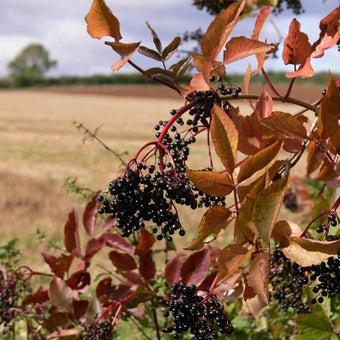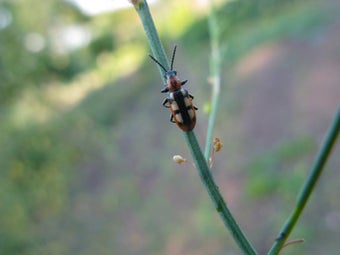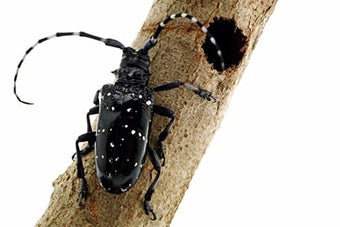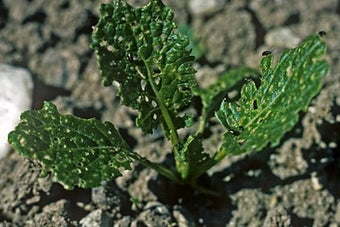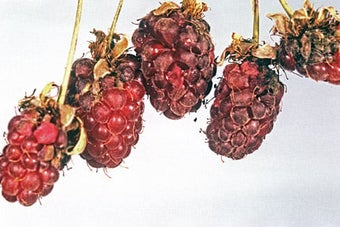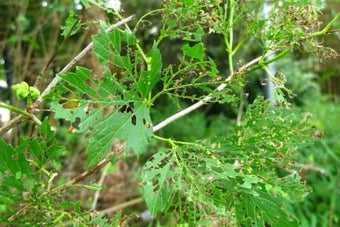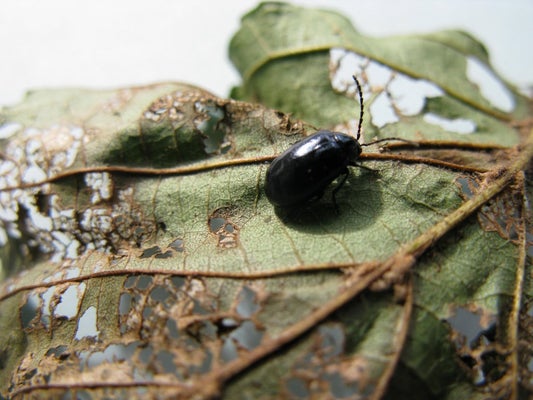
Quick facts
Common name - Alder leaf beetle
Scientific name - Agelastica alni
Plants affected - Alder (Alnus) and some other deciduous trees
Main symptoms - Holes in leaves, presence of blue beetles
Most active - April-July
What is alder leaf beetle?
There are about 250 species of leaf beetle (family Chrysomelidae) found in Britain, they range in size from 1 mm to 18 mm. The family contains many metallic and attractive species and all feed on plants (herbivores).
Alder leaf beetle is an 7-8 mm long dark metallic blue leaf beetle that feeds on alder (Alnus) and is occasionally found on other trees such as beech (Fagus sylvatica), hazel (Corylus), hornbeam (Carpinus betulus) and apple (Malus). It overwinters as adults which emerge in the spring, sometimes in large numbers.
The black caterpillar-like larvae also feed on the leaves of alder and other trees and reach 11 mm in length. Larvae can be found on the leaves in spring and summer. The beetle has one generation a year. Adults emerge from soil and leaf litter where they have been overwintering in early spring, they are winged and capable of flight. New generation adults can be found from mid summer, although may enter a summer diapause (aestivation).
Alder leaf beetle was considered extinct in Britain with almost no records of it between 1946 and 2003. In 2004 larvae and adults were found in Manchester. It is not known how the beetles reached Manchester, but it is possible they arrived with plant imports. The beetle is now widespread in northern England and has spread into north Wales. In 2014 it was discovered in Hampshire and it is now widespread in the south east and spreading into the midlands. It may become widespread across much of England and Wales. In some areas this beetle has become very abundant and can cause significant defoliation.

Management
It can be impossible to manage alder leaf beetle particularly on taller trees. Although the feeding damage they cause can be unsightly, it is something that the trees will survive and the beetle can be tolerated. Although damage on established trees may look severe the trees will usually survive with no long term effects on health or vigour.
- Tolerate populations of plant feeding beetles
- Encourage wildlife in the garden, many animals including birds, frogs and predatory insects such as ground beetles and social wasps will eat the larvae and sometimes adult beetles
- Remove beetles by hand where practical




